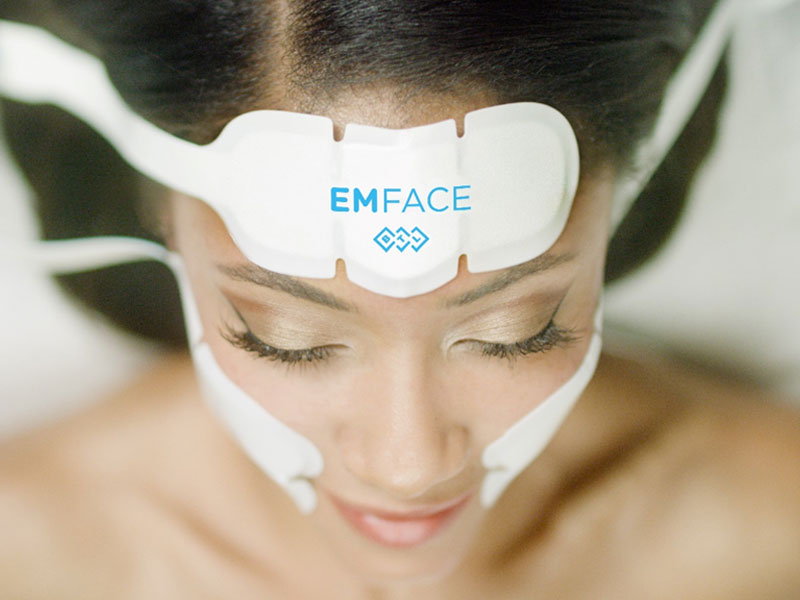
In the world of aesthetic medicine, toning and strengthening the face has become a priority for those seeking to improve their appearance and prevent the signs of aging. Toning the face, although often neglected in favor of other parts of the body, is essential to maintaining a youthful and dynamic appearance. This article explores the reasons for toning the face, the muscles involved, and modern techniques, including the innovative Emface method
The face is composed of many small muscles directly attached to the skin. With age, these muscles tend to lose their tone and volume, leading to wrinkles, sagging, and a loss of skin elasticity. Toning the face helps to:
Reduce the signs of aging:
Well-toned facial muscles can support the skin more effectively, reducing the appearance of wrinkles and sagging due to aging, providing a non-surgical lift.
Improve blood circulation:
Muscle exercise stimulates blood circulation, increasing the supply of oxygen and essential nutrients, promoting healthier and more radiant skin.
Strengthen facial structures:
As with any other muscle in the body, training facial muscles can help strengthen and maintain facial structures, contributing to more defined contours such as the cheekbones and jawline.
Enhance facial expressions:
Well-toned facial muscles allow for clearer and more dynamic expressions, improving social interactions and non-verbal communication.
Prevent sagging:
Maintaining the density of the elevating muscles can delay the signs of aging and maintain a younger appearance for longer
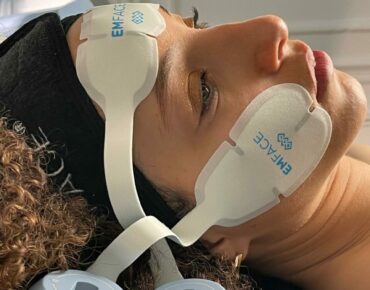
In conclusion, targeting the elevating muscles of the face is essential for maintaining a balance between a rejuvenated and natural appearance and avoiding heavy features. Techniques and exercises aimed at strengthening these specific muscles are key components of an effective skincare routine, contributing to better aesthetics and overall health of the skin and facial structures.
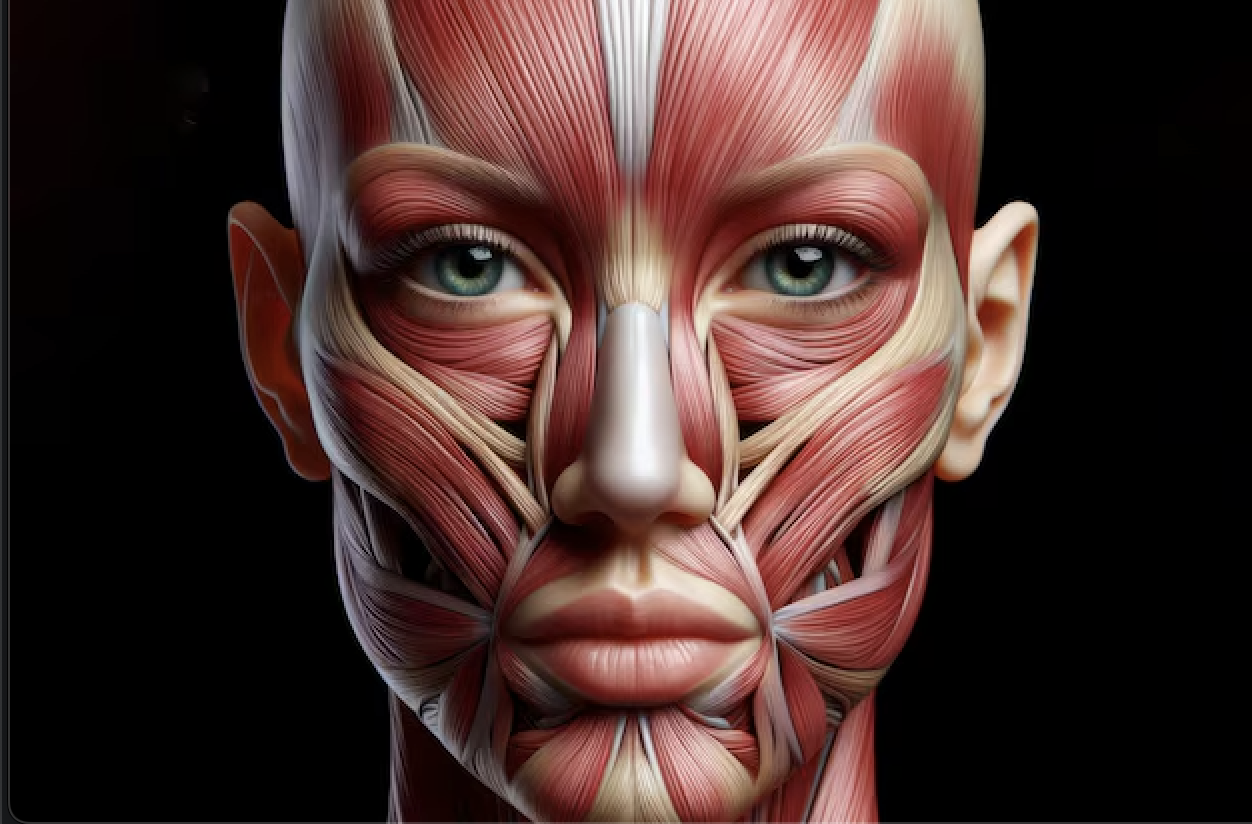
These muscles help raise the eyebrows, creating a more alert and open look. Strengthening these muscles can help reduce forehead wrinkles and prevent eyebrow sagging, which contributes to a tired look. The frontal muscles, essential for facial expression and non-verbal communication, play a crucial role in maintaining a youthful appearance. Located on the forehead, these muscles are vital for expressing emotions such as surprise, attention, concern, and worry.
The Frontal muscle is part of the occipito-frontal muscle, located in the upper region. It extends from the scalp to the upper forehead, where it connects to tissues above the eyebrows. This muscle is unique because it is one of the few facial muscles not directly attached to a bone but rather to connective tissues.
With aging, the frontal muscle can begin to lose its elasticity and strength, often leading to visible changes such as deep horizontal wrinkles on the forehead and eyebrow sagging. This sagging contributes to a more tired and older look
They are partly responsible for the appearance of cheek volume and play an essential role in facial expression, especially in smiling and laughing, contributing to the overall appearance. There are two main zygomatic muscles in the face:
Major Zygomatic Muscle:
Originates on the zygomatic bone (cheekbone) and inserts into the skin at the corner of the mouth. Its contraction pulls the corner of the mouth upward and backward, producing a smile.
Minor Zygomatic Muscle:
Smaller than the major zygomatic muscle, it also starts on the zygomatic bone but inserts higher on the upper lip. Its primary function is to elevate the upper lip, contributing to the expression of a smile and exposing the upper teeth.
These muscles are crucial for expressing joy, pleasure, and sociability. They enable dynamic facial movements essential not only for emotional expression but also for non-verbal communication.
With age, zygomatic muscles, like other facial muscles, can lose their tone and volume. This can lead to sagging skin around the cheeks and mouth, altering the resting expression and making the smile less pronounced. Additionally, medical conditions such as Bell’s palsy or other forms of facial paralysis can affect the function of these muscles, severely influencing facial expression.
The risorius is thin and superficial, located in the cheek area at the outer edge of the mouth. It is mainly involved in the lateral pulling of the corners of the mouth, contributing to the expression of a smile or grimace. It plays a key role in the facial expression of the mouth and, by extension, the entire face. Weakness or atrophy of the risorius can affect the dynamics of the smile and give the face a less lively and older appearance
The digastric muscle is located under the jaw and is involved in movements such as opening the mouth and lowering the chin. It contributes to the shape and contour of the lower face and helps maintain tight skin in this area. Atrophy or weakness of this muscle can lead to sagging skin under the jaw and around the neck, often referred to as a “double chin” or neck sagging.
Incorporating exercises that target this muscle can help tone and maintain skin elasticity in the lower face and neck region, contributing to a firmer and younger appearance.
Facial muscle mass loss can occur for several reasons and often affects the overall appearance of the face, giving a more aged or tired look. The aging process is the most common cause of facial muscle mass loss. With age, the production of collagen and elastin, essential for skin support and elasticity, decreases. Additionally, facial muscles tend to weaken and lose volume, contributing to wrinkles, skin sagging, and an overall aged appearance.
Lifestyle factors, such as smoking, poor nutrition, dehydration, and excessive sun exposure, can accelerate the aging process of the skin and muscles. Smoking, in particular, is known to reduce blood circulation and degrade collagen and elastin, which can lead to faster muscle tone loss.
Like other muscles in the body, facial muscles need regular exercise to maintain their strength and volume. Lack of facial exercise can lead to their weakening and atrophy over time. Certain medical conditions can also contribute to muscle mass loss. For example, following a stroke or neurological injury from direct trauma or neuropathic diseases, the nerves that control facial muscles can be affected, leading to muscle atrophy.
Rapid or extreme weight loss can lead to significant loss of subcutaneous fat, which can also affect facial muscle mass. This is often visible through skin sagging and loss of facial feature definition, such as a drooping eyebrow or mouth.
Chronic stress and fatigue can negatively affect overall health, including the health of the skin and muscles. Stress can disrupt hormones and reduce the body’s ability to repair and maintain healthy muscle tissue, even in the face.
Understanding these causes allows for adopting preventive strategies, such as a healthy lifestyle, regular facial exercises, and appropriate skincare, to help maintain the vitality and youthful appearance of the face
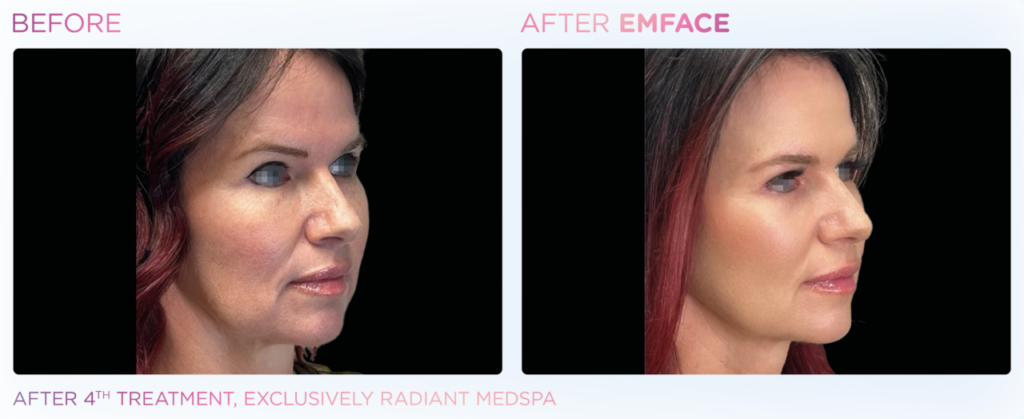
Massages not only stimulate muscles but also improve blood circulation, promoting skin elasticity and health. They can be performed manually or with special devices that mimic hand movements. One example is the Kobido massage, which allows deep work on different layers of the face and is called a “manual lift,” invented in Japan
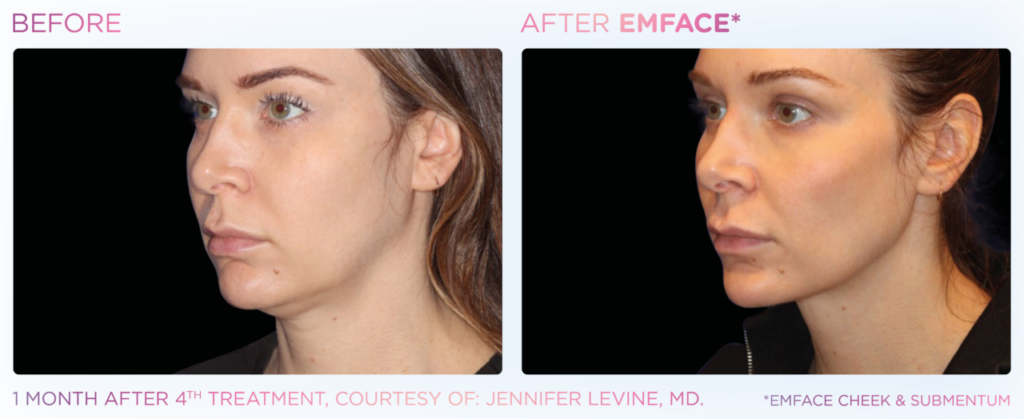
Emface® is an innovative technology in aesthetic medicine that combines electromagnetic energy with radiofrequency to work the facial muscles while improving skin quality. This non-invasive treatment is designed to restore youth and vitality to the face without surgery or injections

Electromagnetic energy works on facial muscles, causing muscle contractions to strengthen and restructure them.
Radiofrequency stimulates collagen and elastin production in the dermis, improving skin elasticity and firmness, and reducing the appearance of wrinkles and fine lines.
Emface® works on three key areas of the face, each addressing specific aesthetic needs:
Treating this area can reduce the appearance of expression lines and horizontal wrinkles, giving a visible lifting effect and improving skin texture.
Applying Emface on the cheeks can improve muscle tone and volume, enhancing the cheekbones and restoring facial structure with a lifting effect
This area targets skin sagging and muscle atrophy around the neck and chin, reducing the appearance of a double chin and improving facial contour
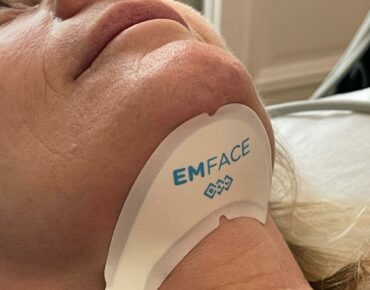
Initial consultation:
Mandatory to evaluate the suitability of the treatment, absence of medical contraindications, and to personalize the treatment.
Before the session:
Your skin is cleansed and makeup removed, then the applicators are placed on the targeted treatment areas.
The treatment:
Simultaneously emits electromagnetic energy and radiofrequency with intensities gradually increased based on individual comfort. Patients feel painless involuntary muscle contractions and a comfortable warmth. The Emface® session lasts 20 minutes, and two areas can be treated simultaneously during the same session.
Post-treatment:
Patients can immediately resume daily activities without any recovery time needed. A moisturizing cream and sunscreen are applied, and makeup can be applied immediately after the session.
Benefits of Emface include:
Reduction of wrinkles and fine lines:
Improves the overall appearance and youthfulness of the face with a visible glow after the session.
Improvement of muscle tone and volume:
Natural lifting effect that progresses over several months.
Skin firming:
Increases skin elasticity and firmness through collagen and elastin fiber stimulation.
More defined facial contour:
Particularly visible in the cheeks and under-chin area.
Before choosing Emface as an aesthetic treatment option, it is crucial to discuss any existing medical conditions with a qualified healthcare professional. A good practitioner will be able to evaluate the suitability of the treatment based on the patient’s medical history and current conditions to ensure treatment safety and efficacy.
Toning the face is an essential component of modern aesthetic medicine, offering not only aesthetic benefits but also advantages for skin health. Thanks to various techniques, from home exercises and massages like Kobido massage to innovations like Emface®, it is possible to achieve results that promote a natural and rejuvenated appearance. Investing in facial muscle health is a wise choice for anyone looking to preserve their youth and vitality
Targeting them is crucial because it helps counterbalance the effects of aging, such as skin sagging and facial volume loss. Strengthening these muscles helps maintain a more defined facial contour and prevent sagging features, thus offering a natural lifting effect without surgery.
While facial exercises are effective in improving muscle tone and preventing sagging, they cannot always replace aesthetic procedures that target deeper or more advanced issues. However, they are excellent for prevention and can be used in conjunction with aesthetic treatments for optimized results.
If you enjoyed this article, you might be interested in the following articles:
Aesthetic Medicine in Paris: A Gentle Revolution for Well-being and Beauty
Comments